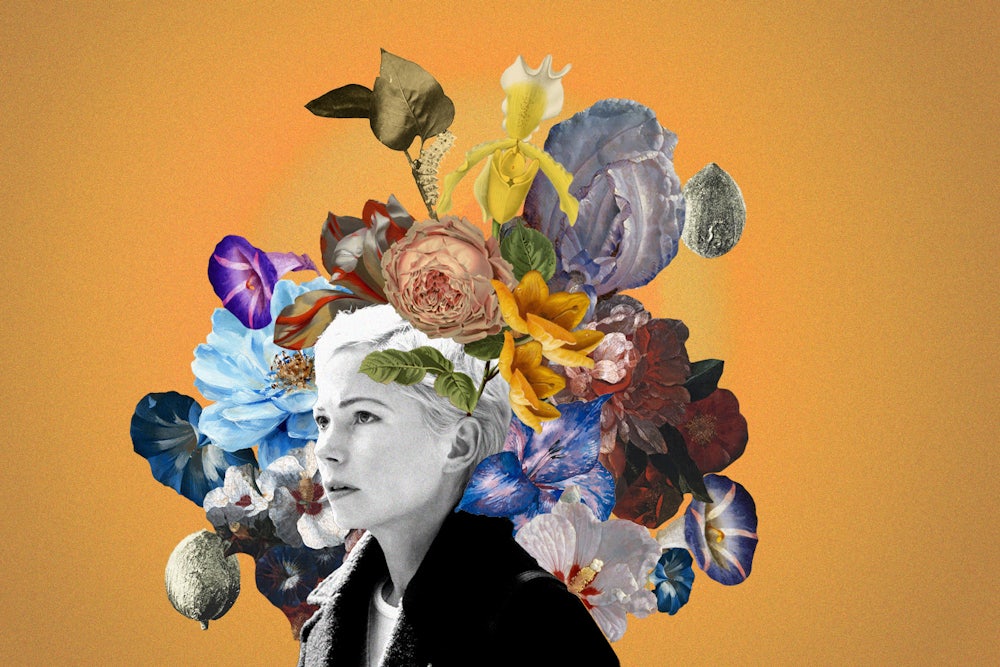It’s an uncanny experience, the moment you realize they’re making TV shows about you. It happens to everyone at some point: All of a sudden, the balance shifts, and the default “adult” character in a plurality of series is just about your age. As a millennial right on the cusp of Gen X—what sociologists rudely call a “geriatric” millennial—I remember having this realization for the first time with the 2011 Fox sitcom New Girl. Launched as a star vehicle for Manic Pixie Dream Actor Zooey Deschanel, New Girl was about Deschanel’s quirky Jess and her three male roommates—a sleazy corporate stooge, an aimless drunken romantic, and a high-strung ex-jock—dealing with the disappointment of their lives so far. In the tradition of Friends, which, in the 1990s, had served as a mirror for the culturally ascendant Generation X, New Girl revolved around an improbably charismatic group of pals hanging out in a grungy yet palatial loft, getting embroiled in various will-they-won’t-they scenarios, and reconciling themselves to their seemingly slow coming of age.
A big difference, however, is that, while the Gen X leads on Friends mostly began their journeys to adulthood in their mid-twenties, New Girl met up with its crew of meandering millennials as they were pushing 30. Pundits and critics have loved to skewer millennials for their entitlement, their laziness, their delusion. And New Girl provides plenty of satirical material to this effect. (In one episode, Nick, played by Jake Johnson, pitches an investor on a new tech product called “RealApps,” which is just a Swiss Army knife glued to an iPhone case.) But, by starting its characters’ growing-up journey late in the game, well after the moment society had raised them to believe they would have “figured things out,” New Girl captured something important about the generation. As Malcolm Harris puts it in his book Kids These Days: Human Capital and the Making of Millennials, this cohort was primed and coached from a young age to be ready for a vibrant twenty-first-century labor market that never quite materialized. They developed childhood anxieties about schoolwork and sports, medicated to gain focus, and took on tons of student debt—all to reach adulthood during the Great Recession. What New Girl understood about millennials was the feeling that they arrived at adulthood overprepared and much too late.
Now, New Girl’s creator, Elizabeth Meriwether, is back with FX’s Dying for Sex, another brilliant exploration of the millennial mind in extremis. Since New Girl, Meriwether has made a career out of exploring the psychodramas of people like Jess and Nick. In 2018’s short-lived Single Parents, she examined millennial parenting cultures, and in 2019’s equally short-lived Bless This Mess, she explored millennials’ vexed relationship to real estate and domesticity. But it was in 2022’s limited-series docudrama The Dropout—starring Amanda Seyfried in a tour de force performance as startup scammer Elizabeth Holmes—that she did something genuinely new with a tried-and-true subject. Infused with the madcap hilarity of her sitcoms, The Dropout is less interesting as a fact-based retelling of the Theranos affair than it is as a kind of green drink–soaked tone poem about white millennial anxiety. Meriwether presents Holmes as an exceptional crook but also as a kind of mythical archetype of her generation. Ambition and burnout, vulgar success and financial precarity, self-confidence and delusion—if New Girl was a millennial comedy, The Dropout was a millennial tragedy.
Dying for Sex, co-created with longtime collaborator Kim Rosenstock, is the third masterpiece of Meriwether’s millennial trilogy. Starring generational icon Michelle Williams, and based on Nikki Boyer’s popular documentary podcast of the same name, Dying for Sex tells the story of Molly, a woman diagnosed with Stage 4 metastatic breast cancer in her early forties who decides to abruptly leave her marriage and devote her remaining years to a kind of sexual vision quest. The show—with assists from dexterous comic co-stars Jenny Slate, Rob Delaney, David Rasche, and Esco Jouléy—is hilariously funny, guttingly sad, and somehow also tingling with joy about the preciousness of life. It examines yet another cursed variation on a constant cycle of hustle and disappointment. If this generation had a hard time figuring out how to get started, can it manage any better figuring out how to end?
We meet Molly (Williams) in couples counseling with her kind, condescending caretaker of a husband, Steve (Jay Duplass). She’s a breast cancer survivor, and she’s filled with desire to return to the life she led before her illness. The problem is that Steve won’t touch her. We’re given a number of explanations as to why. The most generous is that years of being nurse and health care advocate for his wife have irreparably damaged his experience of their relationship; the least generous is that he’s turned off by her mastectomy scars. In short order, Molly receives a call telling her that her cancer has returned in force, terminal this time, and she decides she can’t waste any more time in Steve’s suffocating, sexless embrace. She leaves her husband, moves in with her flaky, fierce best friend, Nikki (Slate, who is astounding in this role), and decides to start exploring her sexuality, really for the first time. It’s the horniness unto death.
If the characters on New Girl felt as though they were just figuring out who they were at 30, the characters on Dying for Sex, more than a decade older, are working through the same sense of aimlessness but with a quickly darkening timeline. Where there was fumbling and frustration, now there is urgency and sorrow. Steve is a critically acclaimed yet commercially unsuccessful journalist, and Molly was his informal editor, his support staff, the second fiddle to a second fiddle. As her heroic helpmeet, he’d transformed himself into the sympathetic protagonist of her story; she’d become a tragic plot point in someone else’s narrative. “I’m too young, and it sucks, OK,” Molly tells her palliative care social worker Sonya (Jouléy). “I haven’t done anything with my life. I actually don’t know what I like or what I want. I’ve never even had an orgasm with another person, and now I’m gonna die.” Sonya, much younger and less inhibited than her client, zeroes in on that carnal absence and encourages Molly to make it her final mission. Letting go of her relationship, as Molly does in the first few scenes of Dying for Sex, and setting out to discover her sexual identity shifts her into the leading, dominant role in her own life.
What follows are a series of escalations, setbacks, ecstasies, horrors, massive highs, and crushing lows. Molly goes AWOL from her friends and family for a full day, compulsively masturbating in a hotel room to, among other sexy stimuli, Keanu Reeves in Speed; she gets into an anticlimactic semantic affair with a Gen Z kid who’s attracted to older women because they know what they want; she seduces her gruff neighbor (Delaney) by unfavorably comparing his naked body to former New York Mayor Bill de Blasio’s; she gets tied up in the storeroom of what appears to be a Crate & Barrel.
Encouraged by Sonya, she discovers that what she’s looking for is control, authority, even mastery. And so she learns, bit by bit, how to dominate, how to find pleasure and affirmation through BDSM. In a scene that manages to be both sexy and laugh-out-loud funny before it turns disastrous, she kicks a man in the privates. Later, ashamed of how good it felt to exercise her power in that way, to forcefully give him—a consenting partner—what he’d been begging for, she cries, “What is wrong with me?” Sonya quickly insists: “Nothing! Nothing the fuck is wrong with you. You early millennials are so tragic.” Hemmed in by a narrative that never served her in the first place, Molly has to learn to move outside of the phantom boundaries that kept her from self-knowledge all this time.
Again, the results are both hilarious and harrowing. In one scene, Molly has had to call her partly estranged mother (Sissy Spacek) to accompany her to chemo. Her mom, busily attentive to the problem at hand but almost constitutionally inattentive to her actual daughter, in turn calls up all of Molly’s cousins as well as Steve to keep her company. Panicked and mortified by this unwanted ensemble, Molly texts one of her lovers, known only on the show as “Pet,” who eagerly shows up in a cartoon dog costume, curls up on Molly’s lap, and barks at her family members until they leave. It’s a rousing and cathartic comic set piece centered around authentic tenderness; Molly is genuinely calmed and nurtured by the act of cuddling and praising a grown man dressed as a puppy. Pet is an emotional support animal. Someone, finally, wants to be her dog.
Is it too much to say that Michelle Williams is the greatest actor of her—my—generation? There are other contenders, but it’s hard to argue with her magnetic skill, her body of work, and, perhaps more to the point, the number of roles she’s played and collaborators she’s elevated that shoot straight to the heart of her cohort’s consciousness. From her starring role on Dawson’s Creek to her star-crossed on- and off-screen partnership with Heath Ledger, to iconic parts in Wendy and Lucy and Blue Valentine and Take This Waltz—all three lyrical examinations of the burden of unfulfilled promise—to this, one could argue that she’s either the greatest or at least the most millennial actress.
Williams, in Dying for Sex, delivers all the qualities viewers have come to expect from her: quiet radiance, surreal expressiveness, a facility with anger. But she’s growing here, too. This is, for instance, her funniest role to date. And it’s not just that Meriwether, Rosenstock, and the many writers for the show have provided her with killer one-liners. Williams marshals the best of her recent performances—the wide-eyed wonder and lust she brought to The Fabelmans, the pinpoint choreography of Fosse/Verdon—and transforms them into a jarringly unique, slapstick, tragicomic heroine.
Late in the series, after a support group meeting, Molly tries an exercise in which she does an interpretive dance set to a personal narrative of her greatest childhood trauma. Unable to perform in front of the group, she is later gripped with a kind of ecstasy while alone with her best friend, and she rises to dance. The camera focuses on her nimble hands, her face, as she swerves and lunges around the quiet room. Like Shirley MacLaine by way of Buster Keaton, Williams fully controls the screen—every pratfall, every sad clown expression somersaulting into transcendence. Earlier in the show, Sonya tells Molly that she likes to be tied up. “What does that feel like?” Molly asks. “Thank you for not asking if it hurts,” Sonya replies. We know that what’s happening to Molly hurts—we understand her disappointment at a personal level, and we understand disappointment at a generational scale. What it feels like, though, is something else. Something more, or at least different, than a tragedy.




